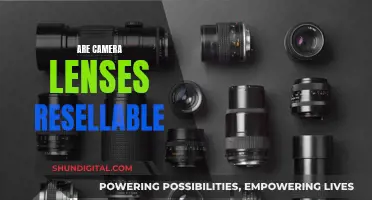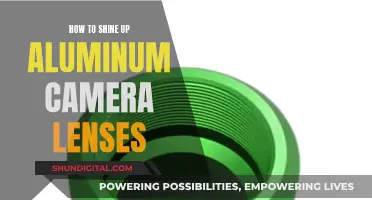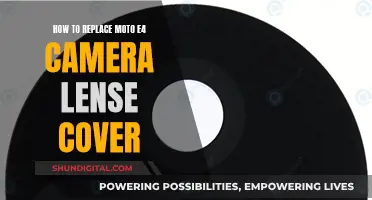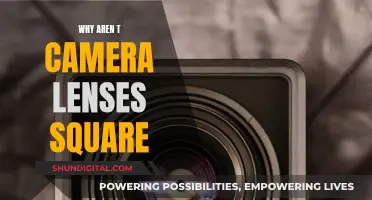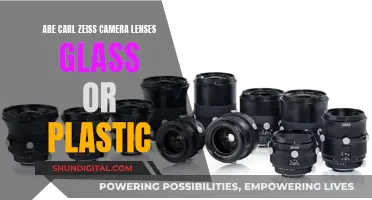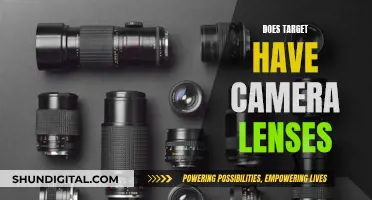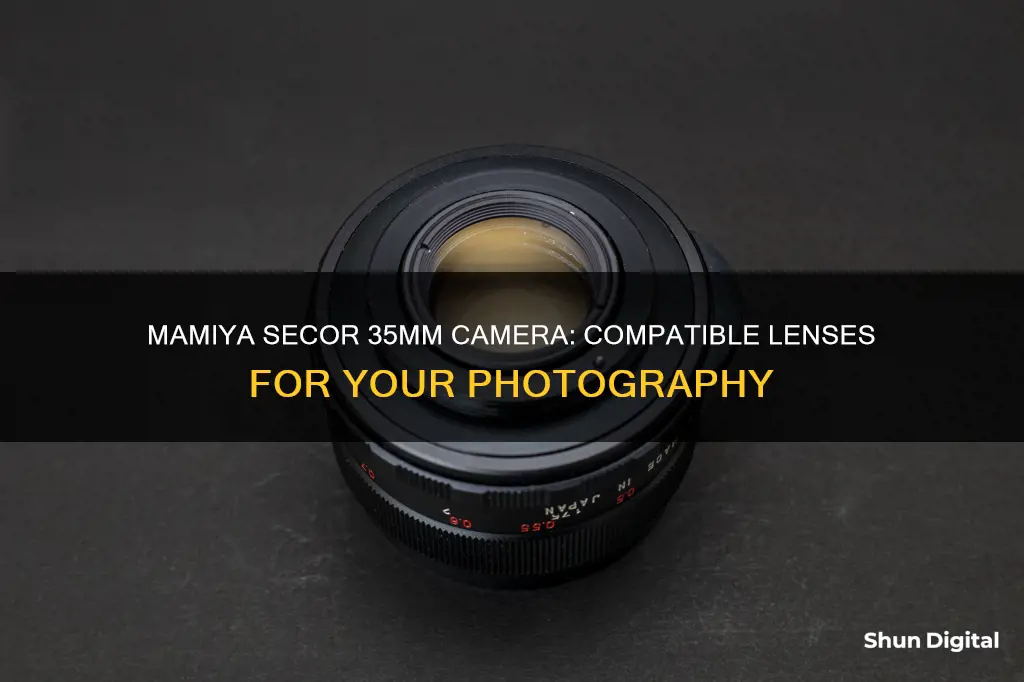
The Mamiya/Sekor 500TL, 1000TL, 500DTL, 1000DTL, and 2000DTL are M42 lens mount cameras. The Mamiya/Sekor E and EF lenses are also compatible with the Mamiya 35mm camera. The Mamiya Z bayonet mount is another lens that fits the Mamiya ZE camera body.
| Characteristics | Values |
|---|---|
| Camera model | Mamiya/Sekor 500TL, Mamiya/Sekor 1000TL, Mamiya/Sekor 500DTL, Mamiya/Sekor 1000DTL, Mamiya/Sekor 2000DTL |
| Lens mount | M42 lens mount |
| Camera release date | 1966, 1968 |
What You'll Learn

Mamiya/Sekor M42 lenses
The Mamiya/Sekor M42 lenses are compatible with the Mamiya 1000 DTL 35mm camera. The M42 lenses are similar to Super Takumars in control layout, with the (A)UTO/(M)anual lever and aperture rings operating identically, but with the A/M lever oriented 180 degrees from the Pentax configuration. The M42 lenses also focus in the opposite direction (clockwise-to-infinity) of the Super Taks (counter-clockwise-to-infinity).
The Mamiya/Sekor M42 lenses come in a variety of focal lengths and include:
- AUTO mamiya/sekor 1:2.8 f=28 mm
- AUTO mamiya/sekor 1:2 f=50 mm Model I (DTL Series)
- AUTO mamiya/sekor 1:2 f=50 mm Model II (DTL Series)
- AUTO mamiya/sekor 1:2.8 f=50 mm
- AUTO mamiya/sekor 55 mm 1:1.4
- AUTO mamiya/sekor 1:1.8 f=55 mm
- Mamiya-sekor 1:1.7 f=58 mm
- Mamiya macro sekor 1:2.8 f=60 mm
- AUTO mamiya/sekor 1:2.8 f=135 mm (TL Series)
- AUTO mamiya/sekor 1:2.8 f=135 mm (DTL Series)
- AUTO mamiya/sekor 1:3.5 f=200 mm Model III
- Mamiya/sekor 1:6.3 f=400 mm
It is important to note that the Mamiya/Sekor M42 lenses are known to have radioactive thorium glass elements, with the 55mm 1:1.4 lens sitting at roughly half the level of radiation output of the 7-element SMC Takumar.
Choosing the Right Camera Lenses for Stunning Landscape Photography
You may want to see also

Mamiya/Sekor E and EF lenses
The Mamiya-Sekor E and EF lenses are compatible with the Mamiya 35mm camera. The E lenses are older, featuring all-manual aperture and focus rings. The EF lenses are newer and feature an auto-aperture mechanism.
Mamiya-Sekor E Lenses
The Mamiya-Sekor E lenses are:
- Mamiya-Sekor E 1:2.8 f=28mm
- Mamiya-Sekor E 1:3.5 f=28mm
- Mamiya-Sekor E 1:2.8 f=35mm
- Mamiya-Sekor E 1:1.4 f=50mm
- Mamiya-Sekor E 1:1.7 f=50mm
- Mamiya-Sekor E 1:2 f=50mm
- Mamiya-Sekor E 1:3.5 f=50mm Macro
- Mamiya-Sekor E 1:2.8 f=135mm
- Mamiya-Sekor E 1:3.5 f=135mm
- Mamiya-Sekor E 1:4 f=200mm
- Mamiya-Sekor E 1:4 f=300mm
Mamiya-Sekor EF Lenses
The Mamiya-Sekor EF lenses are:
- Mamiya-Sekor EF 1:2.8 f=35mm
- Mamiya-Sekor EF 1:1.4 f=50mm
- Mamiya-Sekor EF 1:1.7 f=50mm
- Mamiya-Sekor EF 1:2.8 f=135mm
Cleaning Camera Lenses: Removing Dust and Maintaining Clarity
You may want to see also

Mamiya 645 lenses
- 37 mm f/4.5 C Fisheye
- 50 mm f/4.5 C
- 65 mm f/4.5 C
- 75 mm f/4.5 K/L
- 90 mm f/3.8 C
- 127 mm f/3.8 C
- 140 mm f/4.6 C Macro
- 150 mm f/4.0 C Variable Soft Focus
- 180 mm f/4.5 C
- 250 mm f/4.5 C
- 350 mm f/5.6 APO/L
- 360 mm f/6.3 C
- 500 mm f/8.0 C
- 100–200 mm f/5.2 C Zoom
The Mamiya 645 lenses also come in different versions, including original (single-coated), C (multi-coated), K/L (newer design multi-coated), L (newer design multi-coated, Pro-SD body only), and APO/L (low-dispersion glass, Pro-SD body only).
The Mamiya 645 manual focus series includes the M645, M645 1000S, M645J, Mamiya 645 Super, Mamiya 645 Pro, and Mamiya 645E. The Mamiya 645 auto-focus series includes the Mamiya 645AF, Mamiya 645AFD, Mamiya 645AFD II, Mamiya 645AFD III, and Mamiya 645DF.
The Mamiya 6 is a medium format rangefinder camera that shoots 6x6 images in 120 and 220 film. It offers three lenses: the standard 75mm f/3.5, the wide-angle 50mm f/4, and the 150mm f/4.5 for portraits. The Mamiya 6 is known for its portability, retractable lens, and bright, easy-to-focus rangefinder. The Mamiya 6 MF model allows the use of masks to create 6x4.5 negatives and a panoramic adapter for shooting 35mm film.
Understanding Camera Lenses: Focal Length Explained
You may want to see also

Mamiya Z bayonet mount
The Mamiya Z bayonet mount was introduced with the Mamiya ZE in July 1980. The Mamiya ZE is an SLR camera body that features the first electronically-coupled lenses from a Japanese manufacturer and a quartz-timed electronic shutter. The Mamiya Z bayonet mount is compatible with Mamiya CS-, E- and EF-lenses or lenses with T2 or M42 adapters. The Mamiya ZE-2, a later model in the Z series, adds manual shutter speeds. The Z series was the last line of 35mm cameras produced by Mamiya.
Understanding the 28-400 Lenses: Full-Frame Compatibility Explored
You may want to see also

Mamiya ZE lenses
The Mamiya ZE was introduced in July 1980 and was one of the last 35mm cameras from Mamiya, showcasing innovation from the long-time Japanese manufacturer. It was the first camera ever to use electronic coupling to communicate information between the camera and the lens.
The Mamiya ZE features a quartz-controlled focal-plane metal shutter and a centre-weighted photo diode. It has a unique battery loader, utilising a plastic carriage that holds four LR44-type batteries, which are inserted into the bottom of the camera. The battery mount feels flimsy and prone to breakage. The built-in exposure meter is unreliable, and there is no way to shoot in manual or directly control shutter speed. The camera operates in either aperture priority or full auto mode.
The Mamiya ZE uses Mamiya Sekor E lenses, or lenses with T2 or M42 adapters for the bayonet. The lenses have gold contacts to relay aperture information between the lens and body. The lenses are:
- Mamiya CS-
- Mamiya E-
- Mamiya EF-lenses
The Z-series was the last line of 35mm cameras Mamiya made. The series was introduced with the ZE, which featured the first electronically-coupled lenses from a Japanese manufacturer and a quartz-timed electronic shutter. The ZE-2 was introduced six months after the original ZE and added manual shutter speeds.
Minolta Lenses: Universal Fit for Minolta Cameras?
You may want to see also
Frequently asked questions
The Mamiya-Sekor 35mm camera uses the M42 lens mount.
Some compatible lenses include the Auto Mamiya-Sekor CS 50mm f/1.4, Mamiya-Sekor E 50mm 1:2 S, and the Mamiya 645 AF 35mm f/3.5.
Yes, there are lens adapters available for the Mamiya-Sekor 35mm camera. For example, the Fotodiox lens mount adapter allows Mamiya ZE lenses to be used with Sony E-mount cameras.


